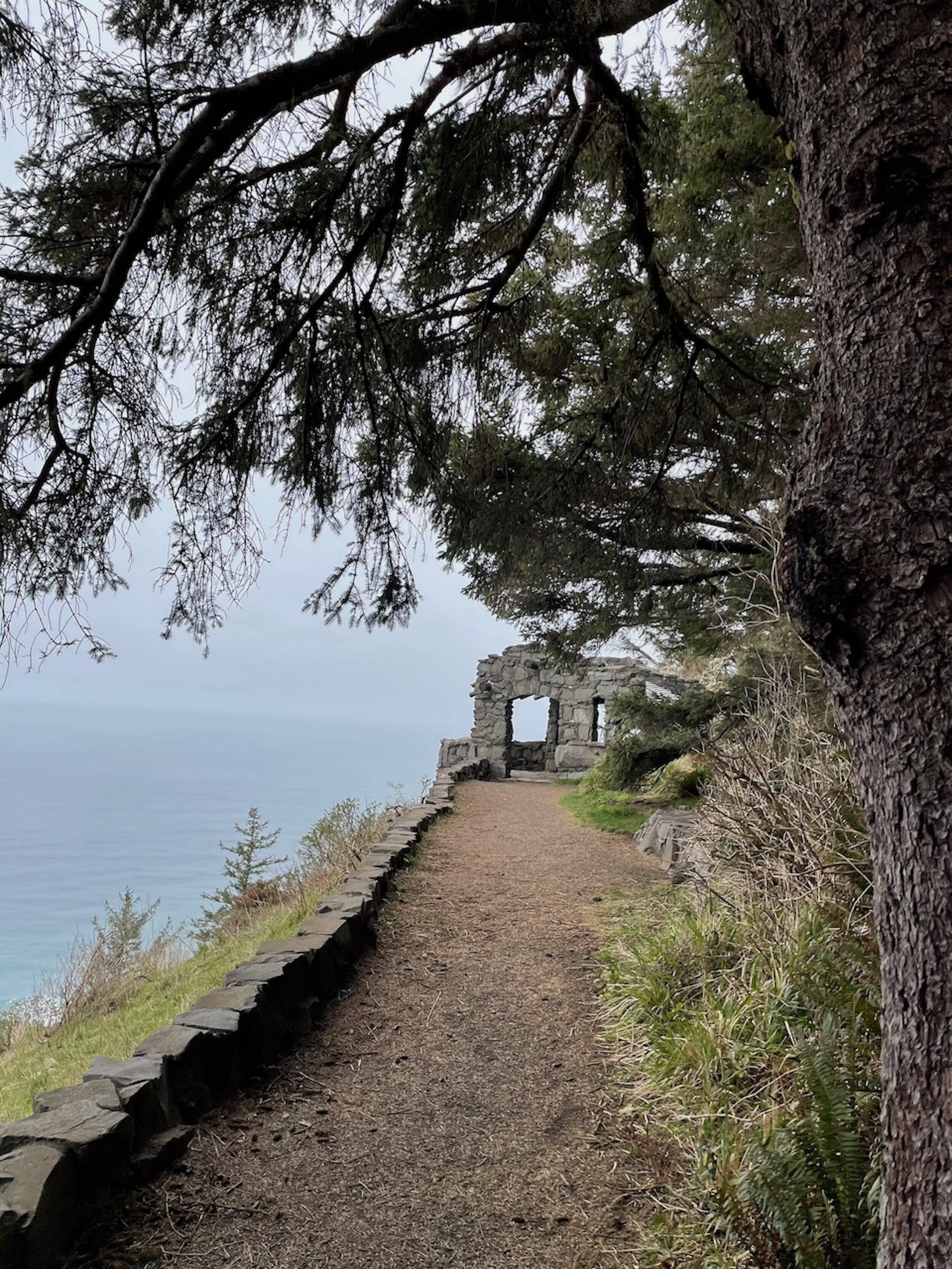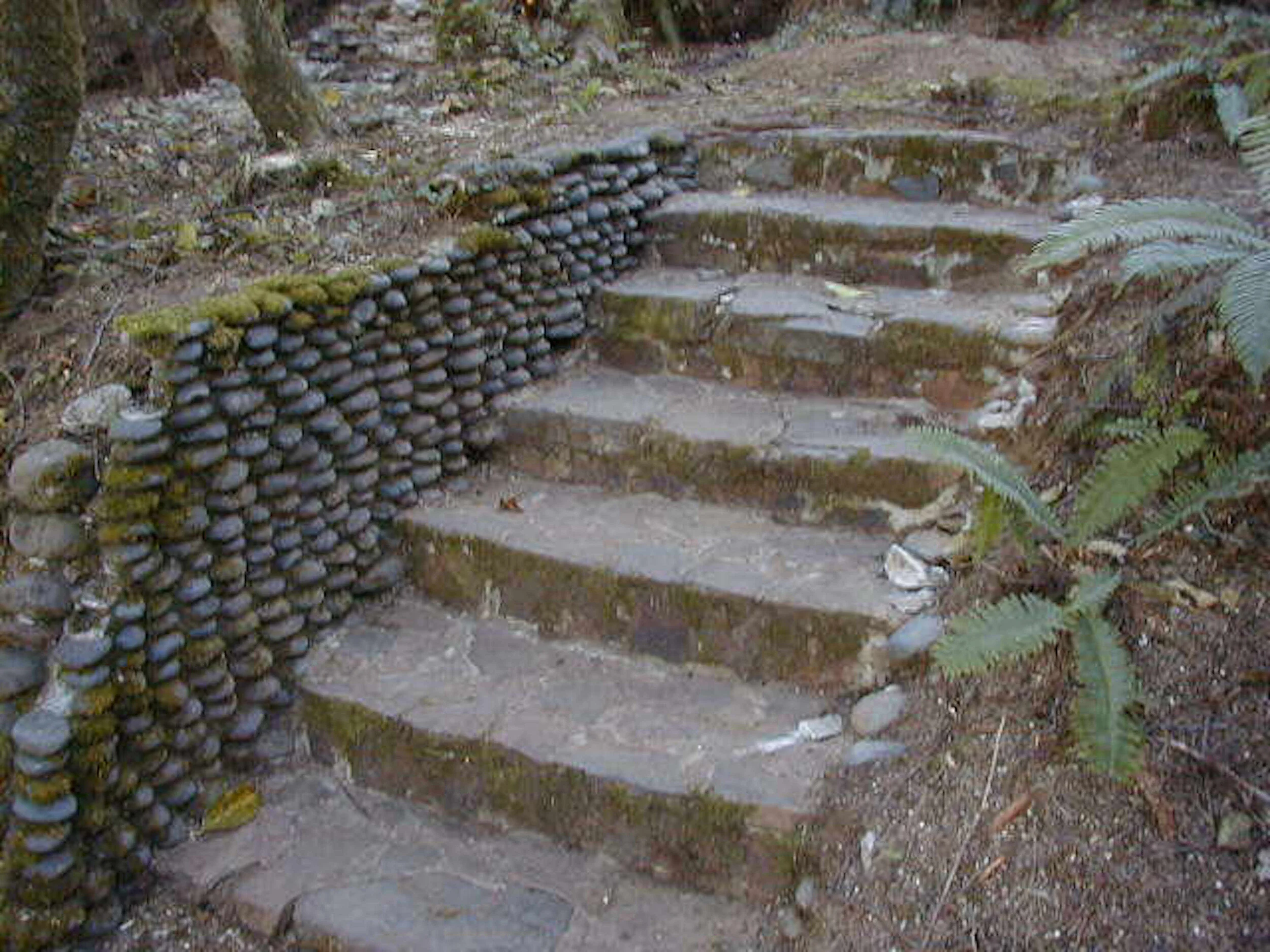Corps values
How the New Deal gave a new look to Cape Perpetua
By Gretchen Ammerman
Oregon Coast TODAY
It took millions of years for the land we now call Cape Perpetua to be pushed up out of the sea and carved by wind, water and time. For thousands of years, it was home to short- and long-term indigenous residents who lived lightly on the land. For most of the 19th Century, new residents burned the trees, cleared the land and filled it with grazing cattle, making a dramatic but reparable impact.
And, after the area became a protected resource managed by the National Forest Service, some of the most lasting impacts came within a period of less than 10 years, bookended by the Great Depression and the Second World War.
For forest service archeologists Kevin Bruce and Molly Kirkpatrick, it’s a part of local history they are both still learning about.
“It was a short but intense period when you saw a lot of the development of the existing campground and facilities,” Bruce said. “There was also a lot of restoration work that brought the forests back to close to what they might have been.”
President Franklin D. Roosevelt was sworn into office on March 4, 1933, and by the end of the month, legislation was passed that created the Civilian Conservation Corps, designed to put young men to work and revive the American economy.
Part of the “New Deal,” projects completed by the CCC covered the whole country and included thousands of roads, schools, theaters, libraries, hospitals, post offices, courthouses, airports, parks, forests, gardens and artwork; all created within a single decade.
“There’s not a lot left from what they did, but their work was really extensive for the time and set up the template for the future of the forest service,” Bruce said. “They created fire towers, ranger stations and even telephone lines.”
Construction of Cape Creek Camp, just below the current Cape Perpetua visitors center, began in June 1933 with a crew of 25 local CCC recruits. During its height, the number of workers living at the camp grew to between 200 and 250.
The camp consisted of three barracks buildings, a wash room with showers, a kitchen and dining area with bakery and cooks’ quarters, a light plant, an infirmary, a recreation room, latrine, bunkhouse for leaders, a supply warehouse and even a garage for company vehicles, complete with a gas pump.
“One of the things about the company here that was unique is that it was composed of all Oregonians,” Kirkpatrick said. “They had impacts not just here but in the surrounding areas too. I’m still trying to absorb all of it. We still use so many things today that were built then.”
CCC workers living at the camp built the Waldport Ranger Station. One of the buildings at the station is still in use today.
At Cape Perpetua, they built bridges over Cape Creek, the infrastructure for the current campground, an extensive trail network, forest roads and the West Shelter parking at the Devil’s Churn. At the highest viewpoint accessible by car on the Oregon Coast, they constructed the stone lookout shelter that still stands almost exactly as it was built, with the exception of the roof, which has been rebuilt several times.
They also planted trees in a huge area between the coast and the Willamette Valley.
“You can really see how much more open the areas were from photos back then,” Bruce said. “It also really shows how things can change for the better with restoration and protection.”
The changes were not just to the infrastructure; Bruce said the New Deal impacts were also huge on the participants and their families.
“A lot of them were in pretty dire poverty situations,” he said. “They learned new skill sets, got education and pay, and many were even able to send part of their pay back to their families. A lot of them didn’t even know how to read and write when they started.”
Jack Miller, one of the first members to arrive at Cape Creek in 1933, told in a later interview that “the camp nearly collapsed during the fierce winter storms the cape so often experiences. The barracks buildings would have blown away if it wasn’t for the boys spending numerous hours huddled on the west end of the floors. Fearing for their lives, the young men would only allow five to leave at a time to eat meals. Ropes were run from each building so that men had something to hold them down when they ventured outdoors to keep them from blowing away.”
Another story collected from past camp residents was about Saturday night sojourns, when local women jumped into company trucks and headed to Newport for roller skating.
Although none of the buildings from the camp remain, several foundation slabs, steps and retaining walls are preserved.
“There was a sign there for many years and they are right now working on a better one that will be installed soon,” Kirkpatrick said. “Most people know about the lookout station and the Amanda’s trail statue but not about the camp. The Conservation Corps is only a small part of the entire history of the area, which includes that of the Alsea people, who called this area Halaqaik, but it’s a very interesting chapter that deserves to be told.”
Once World War II started, the CCC ended, as most of the men were sent overseas and funds were redirected, but the impacts from that short period can still be seen today.
“We tell people about the history of the area to help them connect with it,” Kirkpatrick said. “Once they have that connection, they will be more inclined to respect and take care of the area.”
For more information, go to www.fs.usda.gov.






